Design maverick Gaetano Pesce explores diversity in a retrospective at the Maxxi Museum, Rome
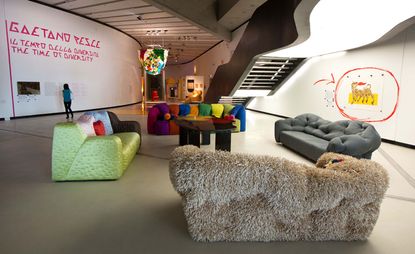
Gaetano Pesce has always straddled the realms of design, art and architecture, and nowhere is this more evident than in a major exhibition at the Maxxi Museum in Rome, which traces his oeuvre over the past 50 years.
Industrial production has been a means of reaching a wider audience for the designer and artist. Through his use of resin, PVC packaging and organic shapes, Pesce has created over the years - with manufacturers such as Cassina, B&B Italia and Zerodisegno - some of the most meaningful pieces of Italian design.
'My work is based on supporting diversity and differences,' explains Pesce referring to the exhibition’s title, Il tempo della diversità (the time of diversity). 'Equality brings boredom and lack of colour in life. I work to promote the diversity of places, cultures, languages and identity.'
For many, Pesce is the maverick designer-architect that turned chairs into colourful, cartoonish characters. From the playful 'Greene Street Chair' produced by Vitra in 1984 - with a distinguishible face in the backrest holes and eight spidery legs - to the curvaceous 'UP' chair, his designs are both a joyous, non-conventional take on seating and, more subversively, a political stance.
The anthropomorphic 'UP 5&6' chair and ottoman, depicting a female body chained to a ball, was created in the 1969 to denounce sexism. Also known as 'Donna' and 'Mamma' (woman and mother), it incorporates many of the themes in Pesce’s production, where the female body is a main concern and inspiration.
'Pesce has always been a pioneer,' says the show's co-curator Domitilla Dardi. 'Not only did he bring art and craftsmanship into industrial production, he also permeated all his work with a strong message of reflection. His objects aren’t merely functional, they provoke thinking, ideas, doubts and sometimes even uncertainties.'
Outside in the piazza of the museum, looms a gargantuan seven metre-high site-specific installation of the 'UP 5&6' chair and ottoman, which includes a hologram of Pakistani rights activist Malala Yousafzai speaking at the UN on one side, and a series of small screens on the other, broadcasting such politically charged messages as: 'Do you know in which country women cannot drive?' As Pesce himself states, 'The oversize installation is intentional so that viewers are inevitably faced with the message about the lack of freedom that women have in many parts of the world.'
It’s a far cry from a sterile design installation, and in pure Pesce tradition, one that begs the viewer to think and ponder beyond aesthetics.

Spread out across 40 mobile panels, Pesce's models, sketches, original maquettes and life-size objects are divided into seven thematic paths, each of which tell a story about the history of his work

Historic resin artworks from Pesce's 'Industrial Skins' series are displayed alongside more recent additions. From left: 'Who's the Cat', 2013; 'Friend' lamp 1995; and 'Il Piede', Industrial Skin, 2014
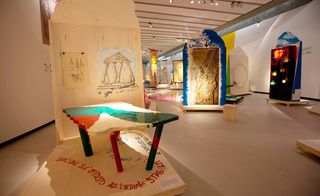
'Sansone' table, 1980, for Cassina. 'My work is based on supporting diversity and differences,' explains Pesce referring to the exhibition’s title

In the foreground is Pesce's 'Lustre for Lille', 1997, and behind it, the 'Wan Chai' chair and drawing, 1986
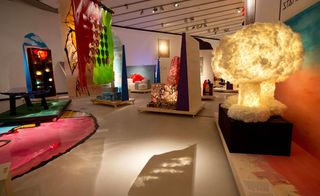
Industrial production has been a means of reaching a wider audience for the designer and artist, with his works often taking a political stance, such as in the 'Cloud' lamp, 2013

From left: 'Senza Fine Unica' for Meritalia, 2011; and a project plan for the renovation of Lingotto, 1983
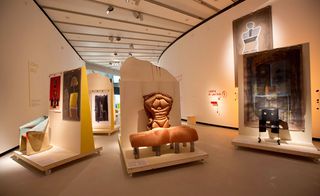
The seemingly haphazard layout of the work is designed to express the exhibition's underlying theme of diversity. From left: 'I Feltri chair' prototype, 1986; 'Sofa for Massage', 2002, for Meritalia; and 'Greene Street' chair and drawing, 1984
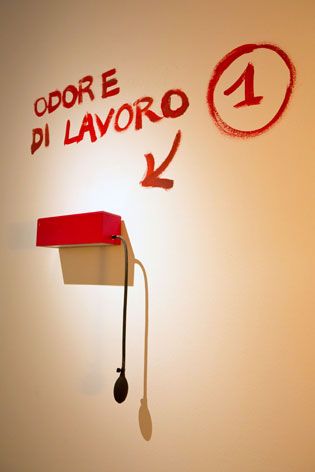
'Fragrance of work', 2014. 'Pesce has always been a pioneer,' says the show's co-curator Domitilla Dardi. 'Not only did he bring art and craftsmanship into industrial production, he also permeated all his work with a strong message of reflection'
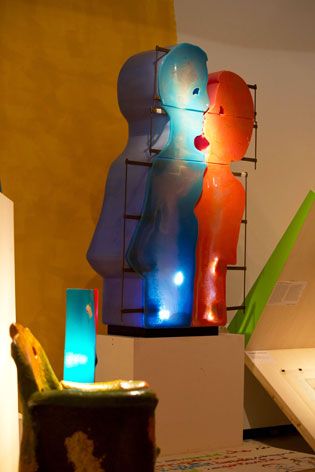
'L'abbraccio' cabinet, 2010
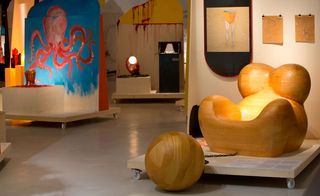
The anthropomorphic 'UP 5&6' chair and ottoman (right), depicting a female body chained to a ball, was created in the 1969 to denounce sexism. Also known as 'Donna' and 'Mamma' (woman and mother), it incorporates many of the themes in Pesce’s production, where the female body is a main concern and inspiration
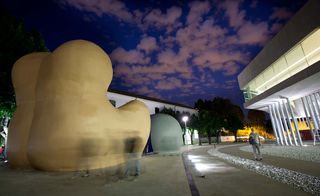
A seven metre-high, site-specific installation of Pesce's 1969 'UP 5 and 6' armchair and ottoman, standing proud outside of the museum, was created especially for the exhibition
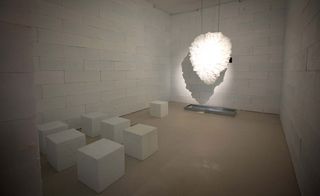
Occupying its own gallery and kept at a frigid temperature, the 'Ice Room' showcases a video installation in which Pesce explores the concept of time
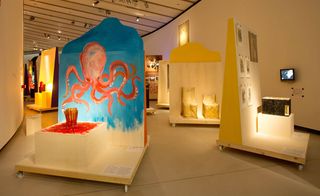
From left: 'Medusa Vase', 2010; the 'Golgotha' chairs for Bracciodiferro, 1971; and a 1972 model of 'Habitat for 2 People'
ADDRESS
Fondazione Maxxi
Via Guido Reni, 4/A
Rome
Wallpaper* Newsletter
Receive our daily digest of inspiration, escapism and design stories from around the world direct to your inbox
-
 Pininfarina Battista Reversario is a new one-off electric hypercar
Pininfarina Battista Reversario is a new one-off electric hypercarThe all-electric Pininfarina Battista Reversario is joining its aesthetic inverse in an ultra-select car collector’s garage. We take a look at a car built to a very precise order
By Jonathan Bell Published
-
 Fernando Jorge’s fluid diamond earrings show his curve appeal
Fernando Jorge’s fluid diamond earrings show his curve appealDiscover Brazilian jewellery designer Fernando Jorge's snake-like silhouettes and graphic shapes
By Hannah Silver Published
-
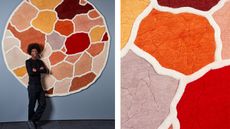 Abreham Brioschi debuts Ethiopia-inspired rugs for Nodus
Abreham Brioschi debuts Ethiopia-inspired rugs for NodusAbreham Brioschi teams up with luxury rug experts Nodus to translate visions from his heritage into a tactile reality
By Ifeoluwa Adedeji Published
-
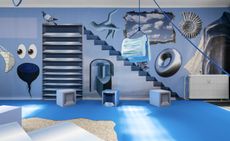 ‘You don't want space; you want to fill it’: Milan exhibition
‘You don't want space; you want to fill it’: Milan exhibitionMaking its debut during Milan Design Week 2022 at Marsèll Paradise, a new exhibition by Matylda Krzykowski, explores how we approach the space we live in (until 15 July 2022)
By Cristina Kiran Piotti Last updated
-
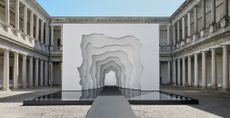 Kohler and Daniel Arsham brought experiential art to Milan Design Week
Kohler and Daniel Arsham brought experiential art to Milan Design WeekLooking back on Daniel Arsham and Kohler’s Divided Layers installation, and the brand’s latest bathroom collection
By Simon Mills Last updated
-
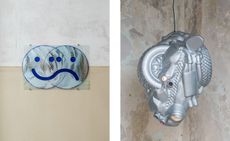 Men’s mental health takes centre stage at an art and design exhibition by Tableau
Men’s mental health takes centre stage at an art and design exhibition by Tableau‘Confessions’, which travels to Copenhagen’s 3 Days of Design following its debut at Milan Design Week 2022, features commissioned work by 14 male artists, designers and architects, reflecting on toxic masculinity, vulnerability and mental health
By TF Chan Last updated
-
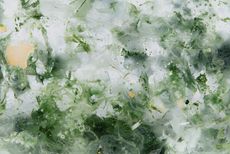 Recycled glass tiles by Studio Plastique, Snøhetta and Fornace Brioni launch in Milan
Recycled glass tiles by Studio Plastique, Snøhetta and Fornace Brioni launch in MilanThe ‘Forite’ tile collection, which upcycles glass components from discarded fridges, ovens and microwaves, launches with an exhibition at Alcova during Milan Design Week 2022
By TF Chan Last updated
-
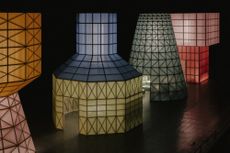 Hermès’ annual Milan Design Week spectacle is inspired by brutalist water towers
Hermès’ annual Milan Design Week spectacle is inspired by brutalist water towersBringing colour and lightness to Fuorisalone 2022, Hermès’ installation at La Pelota conceals the maison’s latest collections of furniture, accessories and lighting
By Rosa Bertoli Last updated
-
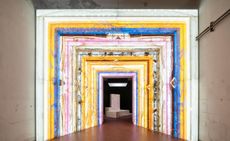 Alcova: wellbeing, cultural identity and the environment in focus at Milan Design Week 2022
Alcova: wellbeing, cultural identity and the environment in focus at Milan Design Week 2022In its fourth edition during Milan Design Week 2022, Alcova brings together a diverse group of designers and brands curated by Valentina Ciuffi and Joseph Grima
By Sujata Burman Last updated
-
 New Giorgetti furniture balances beauty and functionality
New Giorgetti furniture balances beauty and functionalityNew Giorgetti furniture, revealed at Salone del Mobile 2022 and photographed here at the rationalist Castrocaro Terme, is perfectly poised between beauty and functionality
By Rosa Bertoli Last updated
-
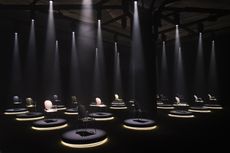 Philippe Starck reinterprets Dior’s Louis XVI Medallion chair in Milan
Philippe Starck reinterprets Dior’s Louis XVI Medallion chair in MilanDior has commissioned Philippe Starck to put a contemporary twist on a classic piece of seating for Milan Design Week 2022, complete with an immersive installation at Palazzo Citterio
By TF Chan Last updated